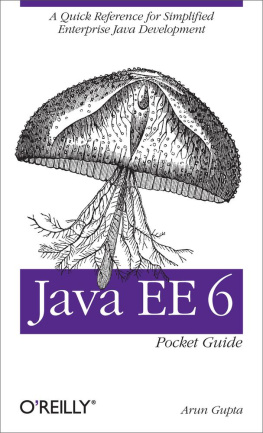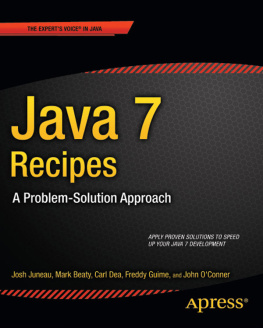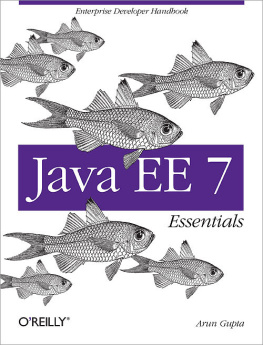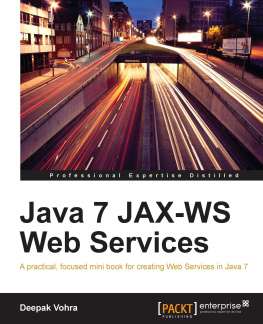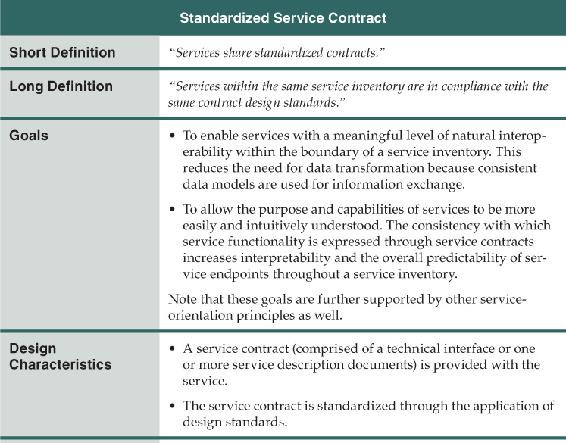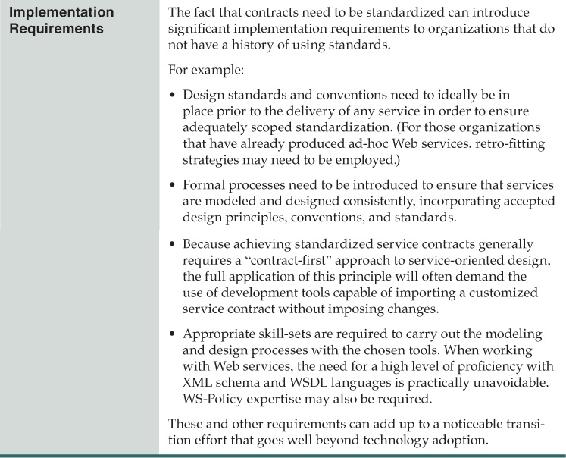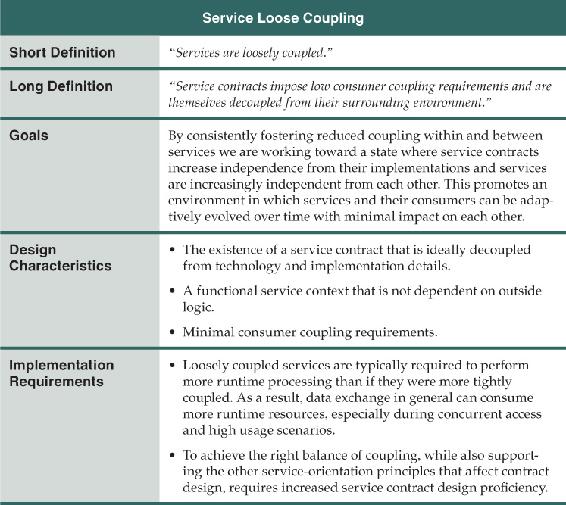Thomas Plunkett - SOA with Java: Realizing Service-Orientation with Java Technologies
Here you can read online Thomas Plunkett - SOA with Java: Realizing Service-Orientation with Java Technologies full text of the book (entire story) in english for free. Download pdf and epub, get meaning, cover and reviews about this ebook. year: 2014, publisher: Prentice Hall, genre: Business. Description of the work, (preface) as well as reviews are available. Best literature library LitArk.com created for fans of good reading and offers a wide selection of genres:
Romance novel
Science fiction
Adventure
Detective
Science
History
Home and family
Prose
Art
Politics
Computer
Non-fiction
Religion
Business
Children
Humor
Choose a favorite category and find really read worthwhile books. Enjoy immersion in the world of imagination, feel the emotions of the characters or learn something new for yourself, make an fascinating discovery.
- Book:SOA with Java: Realizing Service-Orientation with Java Technologies
- Author:
- Publisher:Prentice Hall
- Genre:
- Year:2014
- Rating:5 / 5
- Favourites:Add to favourites
- Your mark:
SOA with Java: Realizing Service-Orientation with Java Technologies: summary, description and annotation
We offer to read an annotation, description, summary or preface (depends on what the author of the book "SOA with Java: Realizing Service-Orientation with Java Technologies" wrote himself). If you haven't found the necessary information about the book — write in the comments, we will try to find it.
An outstanding depth-and-breadth resource for ITarchitects and Java professionals to understand and apply themarriage of SOA and modern Java.
--Antonio Bruno, Enterprise Architecture and Strategy,digitalStrom
A great self-contained book on SOA using flexible Javaimplementations....
--Roger Stoffers, Hewlett Packard
Provides clarity on abstract concepts and is filled withconcrete examples of implementing SOA principles in Javaenvironments.
--Sanjay Singh, Certified SOA Architect
...provides a holistic, comprehensive view on leveraging SOAprinciples and architecture for building and deploying performantJava services.
--Suzanne DSouza, KBACE Technologies
Thomas Erls series of books on services technologyhave shaped, influenced, and strengthened a whole community ofenterprise and solution architects thinking and solutiondevelopment, and the much awaited SOA with Java book is anexcellent addition to the series. It is a must-read.
--Lalatendu Rath, Wipro Technologies
The Definitive Guide to Building Service-Oriented Solutions withLightweight and Mainstream Java Technologies
Java has evolved into an exceptional platform for buildingWeb-based enterprise services. In SOA with Java, Thomas Erland several world-class experts guide you in mastering theprinciples, best practices, and Java technologies you need todesign and deliver high-value services and service-orientedsolutions.
Youll learn how to implement SOA with lightweightframeworks, mainstream Java services technologies, and contemporaryspecifications and standards. To demonstrate real-world examples,the authors present multiple case study scenarios. They furtherdemystify complex concepts with a plain-English writing style. Thisbook will be valuable to all developers, analysts, architects, andother IT professionals who want to design and implement Web-basedservice-oriented architectures and enterprise solutions with Javatechnologies.
Topic Areas
Applying modern service-orientation principles to modern Javatechnology platforms
Leveraging Java infrastructure extensions relevant toservice-oriented solutions
Exploring key concepts associated with SOA andservice-orientation within the context of Java
Reviewing relevant Java platforms, technologies, and APIs
Understanding the standards and conventions that REST and SOAPservices are built upon in relation to Java implementations
Building Java Web-based services with JAX-WS and JAX-RS
Applying the eight key principles of service-orientation designusing Java tools and technologies
Creating Java utility services: architectural, design, andimplementation issues
Constructing effective entity services: service contracts,messages, data access, and processing
Constructing task services, including detailed guidance onservice composition
Using ESBs to support infrastructure requirements in complexservices ecosystems
Thomas Plunkett: author's other books
Who wrote SOA with Java: Realizing Service-Orientation with Java Technologies? Find out the surname, the name of the author of the book and a list of all author's works by series.

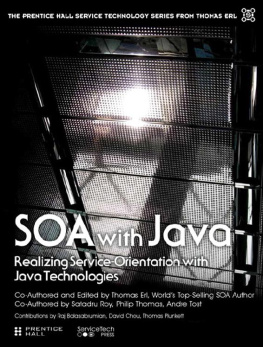
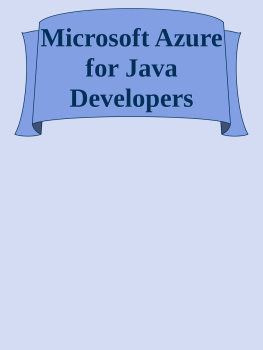
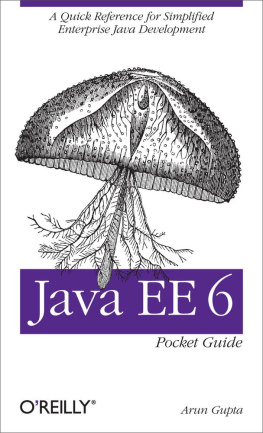
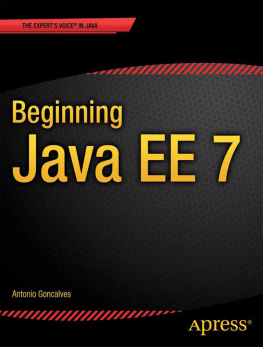

![Mario-Leander Reimer [Mario-Leander Reimer] - Building RESTful Web Services with Java EE 8](/uploads/posts/book/119360/thumbs/mario-leander-reimer-mario-leander-reimer.jpg)
